Text
The Mystery Dagger of the Arizona Historical Society
Hi tumblr. Maybe you can help me out with something.
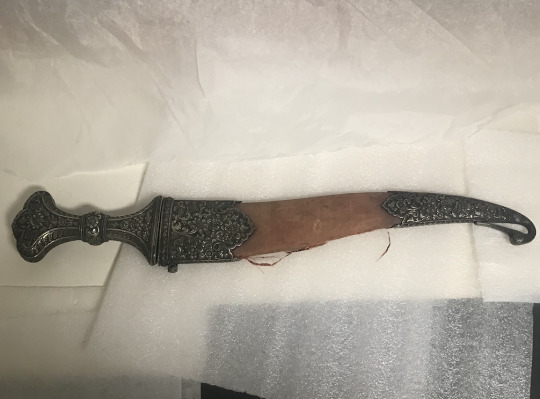
I first saw the dagger while shadowing the curators of the Arizona History Museum. It’s located in the vault of the museum– once the vault of a bank on whose foundations the museum now stands– alongside a cabinet of antique guns, a large quantity of worked silver, and various other objects. The dagger had been sitting atop a filing cabinet, inconspicuous yet conspicuously out of place. Throughout the day, the curators had shown me a number of objects in the museum’s possession that had “Nothing to do with Arizona”, and this dagger, alongside the Hapsburg silver on the museum floor and native-made fishing spears from the Pacific Northwest, numbered among them.
“What’s up with that dagger?” I asked, pointing it out. One of the curators took it down from the cabinet and unsheathed it. The blade made a hellish screech as it rasped free.
“Huh. I don’t actually know,” said the other curator. And so the mystery began.
The dagger, as it turned out, had no provenance. That is to say, there’s no record of where it came from. It lacked an item tag, so there was no way tell who had donated it, where it had come from, or when it had entered the museum’s collection. (I later searched the museum’s artifact catalog, and the artifact doesn’t appear to come up in searches for “dagger” or “knife”. Many of the artifacts have no publicly available images, but the curators tell me that the artifact is not in the catalog.) I joked with several friends that the dagger must be cursed, and that I’m probably about to become an H. P. Lovecraft protagonist if I keep doing what I’m doing. But as we left that vault, all I could think was:
“This needs to go on the blog.”
I really wish I could tell you more about this thing. I’ve cross-referenced similar artifacts in the catalogs of the British Museum, the Met, and the Digital Repository of the Museums of India. The most similar artifacts have been 19th century Turkish, Indian, and Arabian blades. In particular, the flared, hammer-shaped pommel seems to be more common in Persian and Ottoman daggers. (Mughal daggers seem to more often have knob- or horse head-shaped pommels.) It may be a khanjar or a jambiya, or it may be some kind of forgery. The Middle East and North Africa isn’t my area of expertise, but I’m hoping that by putting this out there, I may be able to get some new leads if people recognize this thing. I’ve put all my notes on the dagger below.
What do you all think?
Notes:
-Object measures about 44 cm from pommel to tip of the bird’s neck.
- Sheath has split where it would come in contact with the blade of the dagger. There is some slight staining on the fabric.
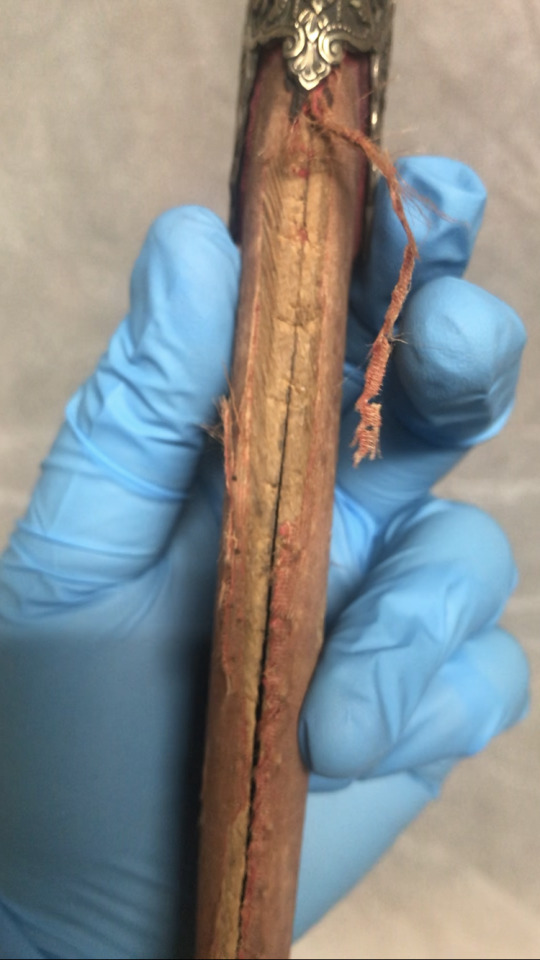
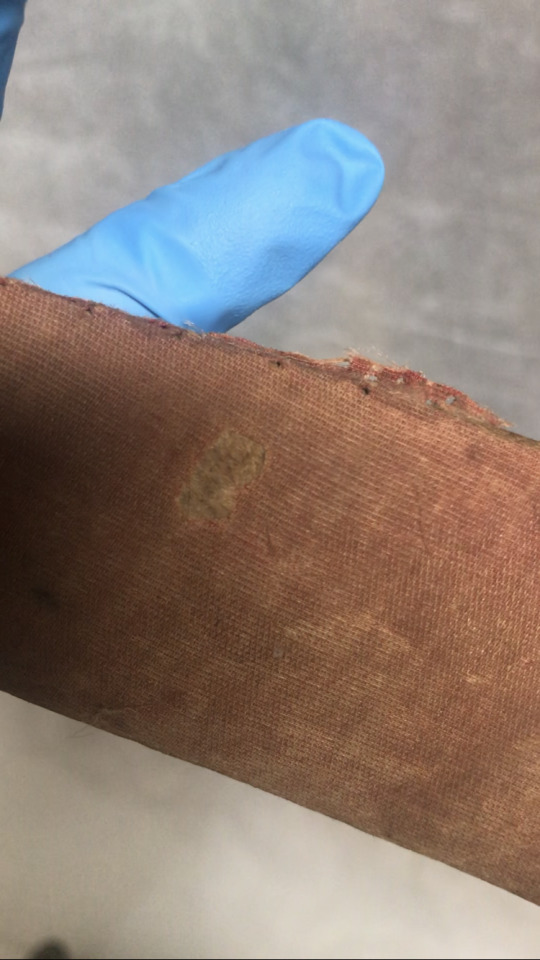
- Blade itself is about 24 cm long with a recurve shape. A ridge runs down both sides of the blade’s flat.

- Blade appears to be sharpened on both edges.
- Blade displays slight nicks and corrosion
- elaborate floral motif on hilt and scabbard
-Scabbard cloth may have originally been red but has faded to a dirty orange over time

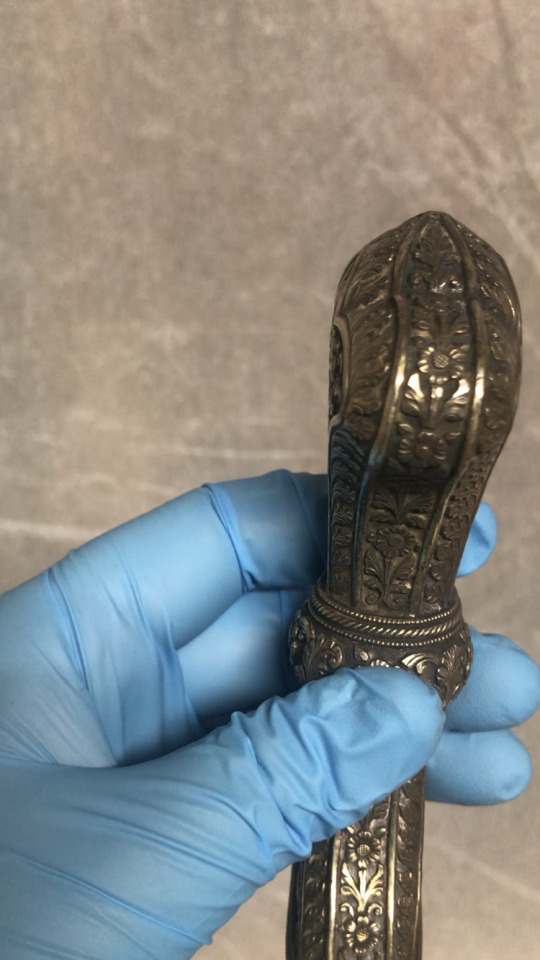
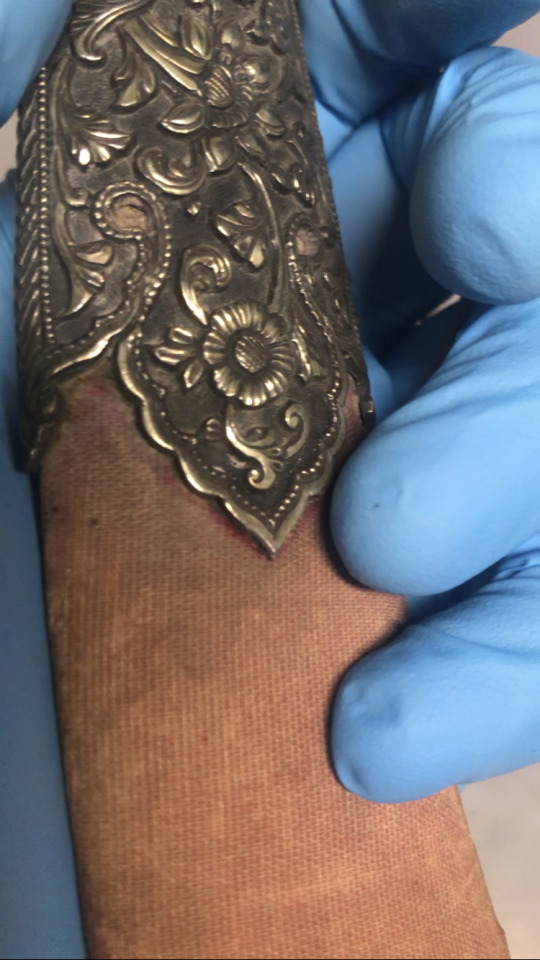

- scabbard features small loop, possibly to secure dagger onto a belt
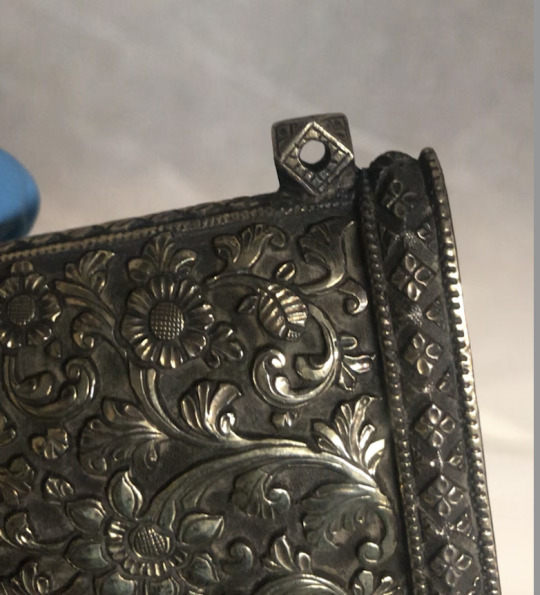
-long-billed bird’s head ornament on the tip of the scabbard. This design appears to be unique and has not appeared in any of the museum daggers I’ve seen. Species of bird is unknown.
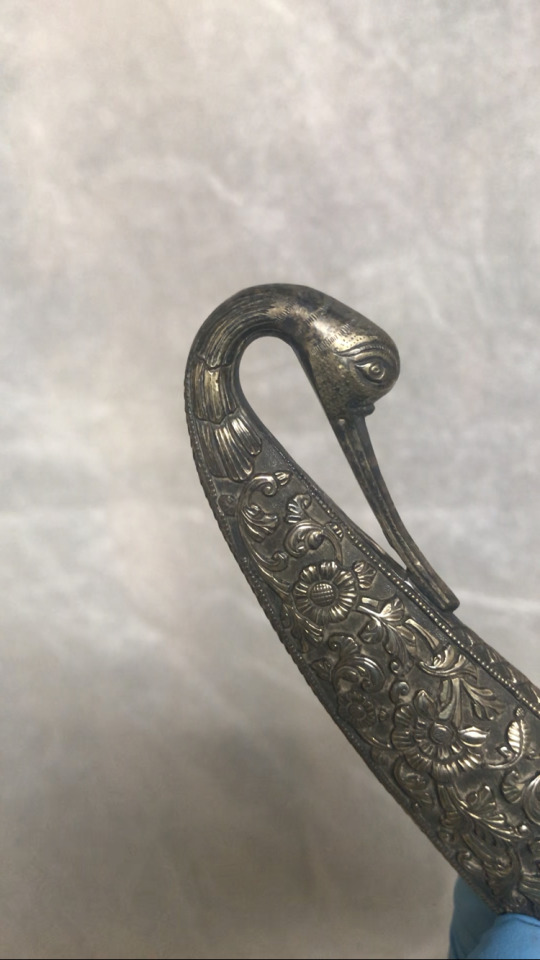

-Parts of the crossguard are decorated with some kind of yellow metal. Gold? Brass? I didn’t have a way to check at the time.

Similar objects:
Jade-handled dagger and cover with silver ornament, origin unknown. Dated c. 19th century. Located at Indian Museum, Kolkata. https://museumsofindia.gov.in/repository/record/im_kol-R-14700-16720
Iron dagger with bone and mother-of-pearl hilt from Mumbai, Maharashtra, India. Date unknown. Located at Indian Museum, Kolkata.
Dagger and sheath set made of steel, copper, gold, bloodstone and ruby. Culture of origin listed as “Persian or Turkish, Ottoman”. Dated 18th-19th century. Located at the Metropolitan Museum of Art in New York City.
Dagger (Jambiya) with sheath and belt. Materials: steel, silver, wood, leather, iron. Culture of origin listed as “Arabian”. Dated 19th century. Located at the Metropolitan Museum of Art in New York City.
Dagger (Jambiya) with sheath. Materials: steel, wood, silver, brass, gold, niello (a black compound of sulfur and copper, lead, or silver used to infill engraved metal). Culture of origin listed as “Moroccan”. Dated 19th century. Located at the Metropolitan Museum of Art in New York City.
Steel, rock crystal, and gold ceremonial dagger. Catalog description reads as follows: “Although intended for ceremonial use, this dagger features discretely carved talismanic inscriptions of the kind found on arms and armor that were designed for battle. The hilt includes gold inscriptions that call upon ‘Ali and Allah.”. Culture of origin listed as “Indian”. Dated 19th century. Located at the Metropolitan Museum of Art in New York City.
Note: All four Met daggers originate in are credited to the “Bequest of George C. Stone, 1935”. Might be worth following up on?
#cabinet of curiosities#history#artifact#dagger#military history#MENAS#how nothing happens#museum#archaeology#history mystery#what is this thing? am i cursed now?#arabia#persia#india#weapon#who is george c stone and why does he have so many of these daggers?#arizona history museum#nothing
5 notes
·
View notes
Text
Possible first posts?
Why is there nothing in the Santa Cruz riverbed? (Local history: Tucson. Environmental history. Social history. Economic history?)
Cowtown Keeylocko, the western town/ranch created by Ed Keeylocko after facing discrimination from fellow ranchers. Ed died in 2019, but it looks like his family is still maintaining the property. This location appeared in a reddit thread on abandoned Tucson locations. (Local history: Tucson. Social history. Historical biography? Cultural history?)
Hidden Monuments, Suntran Style (updated version of the essay "And Some of Us Ride the Rails for Fun"; local history: Tucson. Social history. Cultural history)
Tucson in 100 objects (Tucson in monuments? What is a monument? Intellectual history. Local history: Tucson. Cultural history.)
Economic history centered on the abandoned Lisa Frank facility?
Cultural? history of the mysterious dagger found in the vault under the Arizona History Museum. This one might be tough because it has no tag, no provenance, and no way of knowing where this thing came from. Also i have no idea if the curators will let me photograph this thing.
0 notes